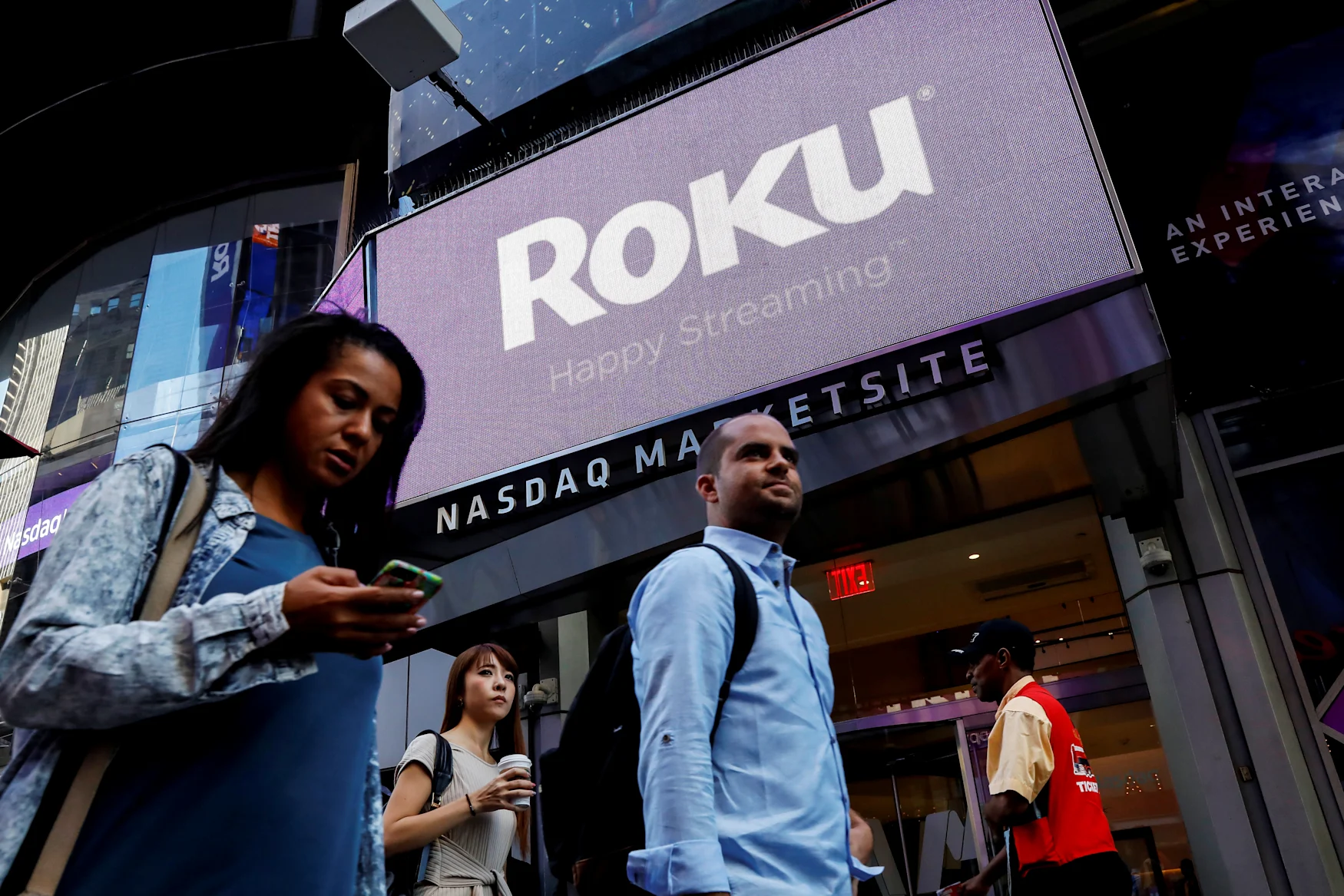All the big tech layoffs of 2023

The tech industry is reeling from the combination of a rough economy, the COVID-19 pandemic and some obvious business missteps. And while that led to job cuts in 2022, the headcount reductions have unfortunately ramped up in 2023. It can be tough to keep track of these moves, so we’ve compiled all the major layoffs in one place and will continue to update this story as the situation evolves.
June

Dado Ruvic / reuters
Spotify layoffs
Spotify followed up its January layoff plans with word in June that it would cut 200 jobs in its podcast unit. The move is part of a more targeted approach to fostering podcasts with optimized resources for creators and shows. The company is also combining its Gimlet and Parcast production teams into a renewed Spotify Studios division.
May

REUTERS/Chris Wattie
Shopify layoffs
Shopify’s e-commerce platform played an important role at the height of the pandemic, but the Canadian company is scaling back now that the rush is over. In May, the company laid off 20 percent of its workforce and sold its logistics business to Flexport. Founder Tobi Lütke characterized the job cuts as necessary to “pay unshared attention” to Shopify’s core mission, and an acknowledgment that the firm needed to be more efficient now that the “stable economic boom times” were over.
Polestar layoffs
Polestar delayed production of its first electric SUV (the Polestar 3) in May, and that had repercussions for its workforce. The Volvo spinoff brand said in May that it would cut 10 percent of its workforce to lower costs as it faced reduced manufacturing expectations and a rough economy. Volvo needed more time for software development and testing that also pushed back the EX90, Polestar said.
SoundCloud layoffs
SoundCloud followed up last year’s extensive layoffs with more this May. The streaming audio service said it would shed 8 percent of its staff in a bid to become profitable in 2023. Billboard sources claim the company hopes to be profitable by the fourth quarter of the year.
April

Dado Ruvic / reuters
Lyft layoffs
Lyft laid off 13 percent of staff in November 2022, but took further steps in April. The ridesharing company said it was laying off 1,072 workers, or about 26 percent of its headcount. It comes just weeks after an executive shuffle that replaced CEO Logan Green with former Amazon exec David Risher, who said the company needed to streamline its business and refocus on drivers and passengers. Green previously said Lyft needed to boost its spending to compete with Uber.
Dropbox layoffs
Cloud storage companies aren’t immune to the current financial climate. In April, Dropbox said it would lay off 500 employees, or roughly 16 percent of its team. Co-founder Drew Houston pinned the cuts on the combination of a rough economy, a maturing business and the “urgency” to hop on the growing interest in AI. While the company is profitable, its growth is slowing and some investments are “no longer sustainable,” Houston said.
March

Roku layoffs
Roku shed 200 jobs at the end of 2022, but it wasn’t done. The streaming platform creator laid off another 200 employees in March 2023. As before, the company argued that it needed to curb growing expenses and concentrate on those projects that would have the most impact. Roku has been struggling with the one-two combination of a rough economy and the end of a pandemic-fueled boom in streaming video.
Lucid Motors layoffs
If you thought luxury EV makers would be particularly susceptible to economic turmoil, you guessed correctly. Lucid Motors said in March that it would lay off 18 percent of its workforce, or about 1,300 people. The marque is still falling short of production targets, and these cuts reportedly help deal with “evolving business needs and productivity improvements.” The cuts are across the board, too, and include both executives as well as contractors.
Meta slashed 11,000 jobs in fall 2022, but it wasn’t finished. In March 2023, the company unveiled plans to lay off another 10,000 workers in a further bid to cut costs. The first layoffs affected its recruiting team, but it shrank its technology teams in late April and its business groups in late May. The Facebook owner is hoping to streamline its operations by reducing management layers and asking some leaders to take on work previously reserved for the rank and file. It may take a while before Meta’s staff count grows again — it doesn’t expect to lift a hiring freeze until sometime after it completes its restructuring effort in late 2023.
February

Rivian layoffs
Rivian conducted layoffs in 2022, but that wasn’t enough to help the fledgling EV brand’s bottom line. The company laid off another six percent of its employees in February, or about 840 workers. It’s still fighting to achieve profitability, and the production shortfall from supply chain issues hasn’t helped matters. CEO RJ Scaringe says the job cuts will help Rivian focus on the “highest impact” aspects of its business.
Zoom layoffs
Zoom was a staple of remote work culture at the pandemic’s peak, so it’s no surprise that the company is cutting back now that people are returning to offices. The video calling firm said in February it was laying off roughly 1,300 employees, or 15 percent of its personnel. As CEO Eric Yuan put it, the company didn’t hire “sustainably” as it dealt with its sudden success. The layoffs are reportedly necessary to help survive a difficult economy. The management team is offering more than just apologies, too. Yuan is cutting his salary by 98 percent for the next fiscal year, while all other executives are losing 20 percent of their base salaries as well as their fiscal 2023 bonuses.
Yahoo layoffs
Engadget’s parent company Yahoo isn’t immune to layoffs. The internet brand said in February that it would lay off over 20 percent of its workforce throughout 2023, or more than 1,600 people. Most of those cuts, or about 1,000 positions, took place immediately. CEO Jim Lanzone didn’t blame the layoffs on economic conditions, however. He instead pitched it as a restructuring of the advertising technology unit as it shed an unprofitable business in favor of a successful one. Effectively, Yahoo is bowing out of direct competition in with Google and Meta in the ad market.
Dell layoffs
The pandemic recovery and a grim economy have hit PC makers particularly hard, and Dell is feeling the pain more than most. It laid off five percent of its workforce in early February, or about 6,650 employees, after a brutal fourth quarter where computer shipments plunged an estimated 37 percent. Past cost-cutting efforts weren’t enough, Dell said — the layoffs and a streamlined organization were reportedly needed to get back on track.
Deliveroo layoffs
Food delivery services flourished while COVID-19 kept people away from restaurants, and at least some are feeling the sting now that people are willing to dine out again. Deliveroo is laying off about 350 workers, or nine percent of its workforce. “Redeployments” will bring this closer to 300, according to founder Will Shu. The justification is familiar: Deliveroo hired rapidly to handle “unprecedented” pandemic-related growth, according to Shu, but reportedly has to cut costs as it deals with a troublesome economy.
DocuSign layoffs
DocuSign may be familiar to many people who’ve signed documents online, but that hasn’t spared it from the impact of a harsh economic climate. The company said in mid-February that it was laying off 10 percent of its workforce. While it didn’t disclose how many people that represented, the company had 7,461 employees at the start of 2022. Most of those losing their jobs work in DocuSign’s worldwide field organization.
GitLab layoffs
You may not know GitLab, but its DevOps (development and operations) platform underpins work at tech brands like NVIDIA and T-Mobile — and shrinking business at its clients is affecting its bottom line. GitLab is laying off seven percent of employees, or roughly 114 people. Company chief Sid Sijbrandij said the problematic economy meant customers were taking a “more conservative approach” to software investment, and that his company’s previous attempts to refocus spending weren’t enough to counter these challenges.
GoDaddy layoffs
GoDaddy conducted layoffs early in the pandemic, when it cut over 800 workers for its retail-oriented Social platform. In February this year, however, it took broader action. The web service provider laid off eight percent of its workforce, or more than 500 people, across all divisions. Chief Aman Bhutani claimed other forms of cost-cutting hadn’t been enough to help the company navigate an “uncertain” economy, and that this reflected efforts to further integrate acquisitions like Main Street Hub.
Twilio layoffs
Twilio eliminated over 800 jobs in September 2022, but it made deeper cuts as 2023 got started. The cloud communications brand laid off 17 percent of staff, or roughly 1,500 people, in mid-February. Like so many other tech firms, Twillio said that past cost reduction efforts weren’t enough to endure an unforgiving environment. It also rationalized the layoffs as necessary for a streamlined organization.
January

REUTERS/Peter DaSilva
Google (Alphabet) layoffs
Google’s parent company Alphabet has been cutting costs for a while, including shutting down Stadia, but it took those efforts one step further in late January when it said it would lay off 12,000 employees. CEO Sundar Pichai wasn’t shy about the reasoning: Alphabet had been hiring for a “different economic reality,” and was restructuring to focus on the internet giant’s most important businesses. The decision hit the company’s Area 120 incubator particularly hard, with the majority of the unit’s workers losing their jobs. Sub-brands like Intrinsic (robotics) and Verily (health) also shed significant portions of their workforce in the days before the mass layoffs. Waymo has conducted two rounds of layoffs that shed 209 people, or eight percent of its force.
Amazon layoffs
Amazon had already outlined layoff plans last fall, but expanded those cuts in early January when it said it would eliminate 18,000 jobs, most of them coming from retail and recruiting teams. It added another 9,000 people to the layoffs in March, and in April said over 100 gaming employees were leaving. To no one’s surprise, CEO Andy Jassy blamed both an “uncertain economy” and rapid hiring in recent years. Amazon benefited tremendously from the pandemic as people shifted to online shopping, but its growth is slowing as people return to in-person stores.
Coinbase layoffs
Coinbase was one of the larger companies impacted by the crypto market’s 2022 downturn, and that carried over into the new year. The cryptocurrency exchange laid off 950 people in mid-January, just months after it slashed 1,100 roles. This is one of the steepest proportionate cuts among larger tech brands — Coinbase offloaded about a fifth of its staff. Chief Brian Armstrong said his outfit needed the layoffs to shrink operating expenses and survive what he previously described as a “crypto winter,” but that also meant canceling some projects that were less likely to succeed.
IBM layoffs
Layoffs sometimes stem more from corporate strategy shifts than financial hardship, and IBM provided a classic example of this in 2023. The computing pioneer axed 3,900 jobs in late January after offloading both its AI-driven Watson Health business and its infrastructure management division (now Kyndryl) in the fall. Simply put, those employees had nothing to work on as IBM pivoted toward cloud computing.
Microsoft layoffs
Microsoft started its second-largest wave of layoffs in company history when it signaled it would cut 10,000 jobs between mid-January and the end of March. Like many other tech heavyweights, it was trimming costs as customers scaled back their spending (particularly on Windows and devices) during the pandemic recovery. The reductions were especially painful for some divisions — they reportedly gutted the HoloLens and mixed reality teams, while 343 Industries is believed to be rebooting Halo development after losing dozens of workers. GitHub is cutting 10 percent of its team, or roughly 300 people.
PayPal layoffs
PayPal has been one of the healthier large tech companies, having beaten expectations in its third quarter last year. Still, it hasn’t been immune to a tough economy. The online payment firm unveiled plans at the end of January to lay off 2,000 employees, or seven percent of its total worker base. CEO Dan Schulman claimed the downsizing would keep costs in check and help PayPal focus on “core strategic priorities.”
Salesforce layoffs
Salesforce set the tone for 2023 when it warned it would lay off 8,000 employees, or about 10 percent of its workforce, just four days into the new year. While the cloud software brand thrived during the pandemic with rapidly growing revenue, it admitted that it hired too aggressively during the boom and couldn’t maintain that staffing level while the economy was in decline.
SAP layoffs
Business software powerhouse SAP saw a steep 68 percent drop in profit at the end of 2022, and it started 2023 by laying off 2,800 staff to keep its business healthy. Unlike some big names in tech, though, SAP didn’t blame excessive pandemic-era hiring for the cutback. Instead, it characterized the initiative as a “targeted restructuring” for a company that still expected accelerating growth in 2023.
Spotify layoffs
Spotify spent aggressively in recent years as it expanded its podcast empire, but it quickly put a stop to that practice as 2023 began. The streaming music service said in late January that it would lay off 6 percent of its workforce (9,800 people worked at Spotify as of the third quarter) alongside a restructuring effort that included the departure of content chief Dawn Ostroff. While there were more Premium subscribers than ever in 2022, the company also suffered steep losses — CEO Daniel Ek said he was “too ambitious” investing before the revenue existed to support it.
Wayfair layoffs
Amazon isn’t the only major online retailer scaling back in 2023. Wayfair said in late January that it would lay off 1,750 team members, or 10 percent of its global headcount. About 1,200 of those were corporate staff cut in a bid to “eliminate management layers” and otherwise help the company become leaner and nimbler. Wayfair had been cutting costs since August 2022 (including 870 positions), but saw the layoffs as helping it reach break-even earnings sooner than expected.
All products recommended by Engadget are selected by our editorial team, independent of our parent company. Some of our stories include affiliate links. If you buy something through one of these links, we may earn an affiliate commission. All prices are correct at the time of publishing.


